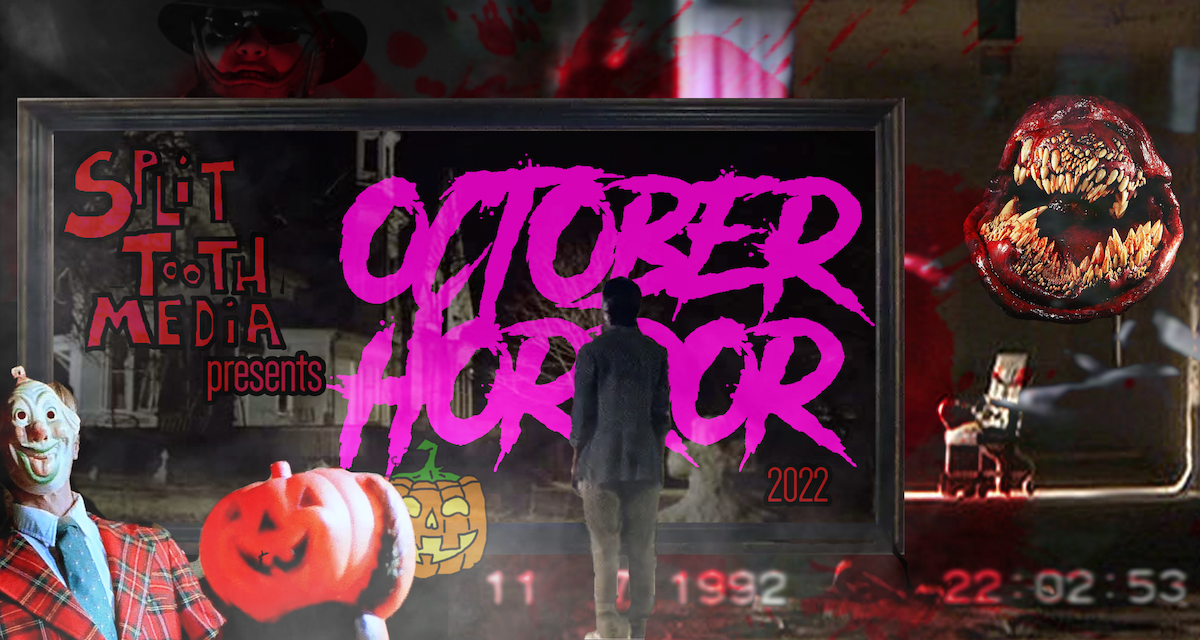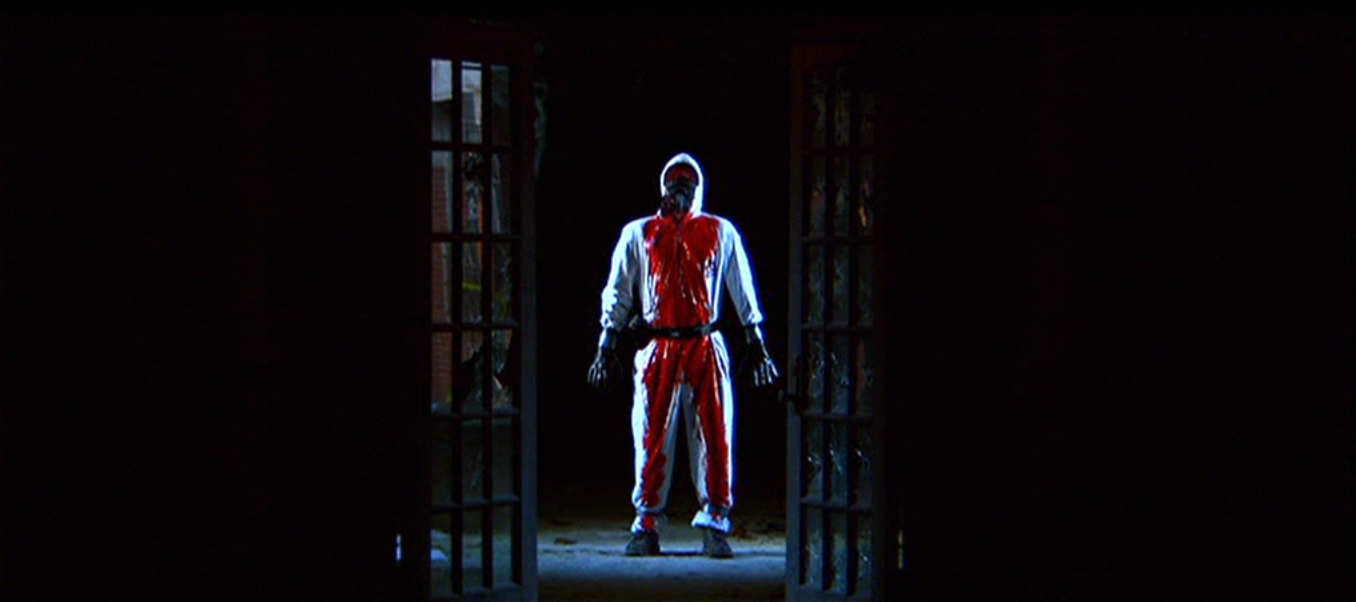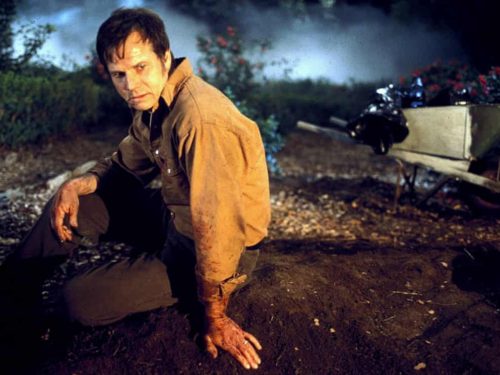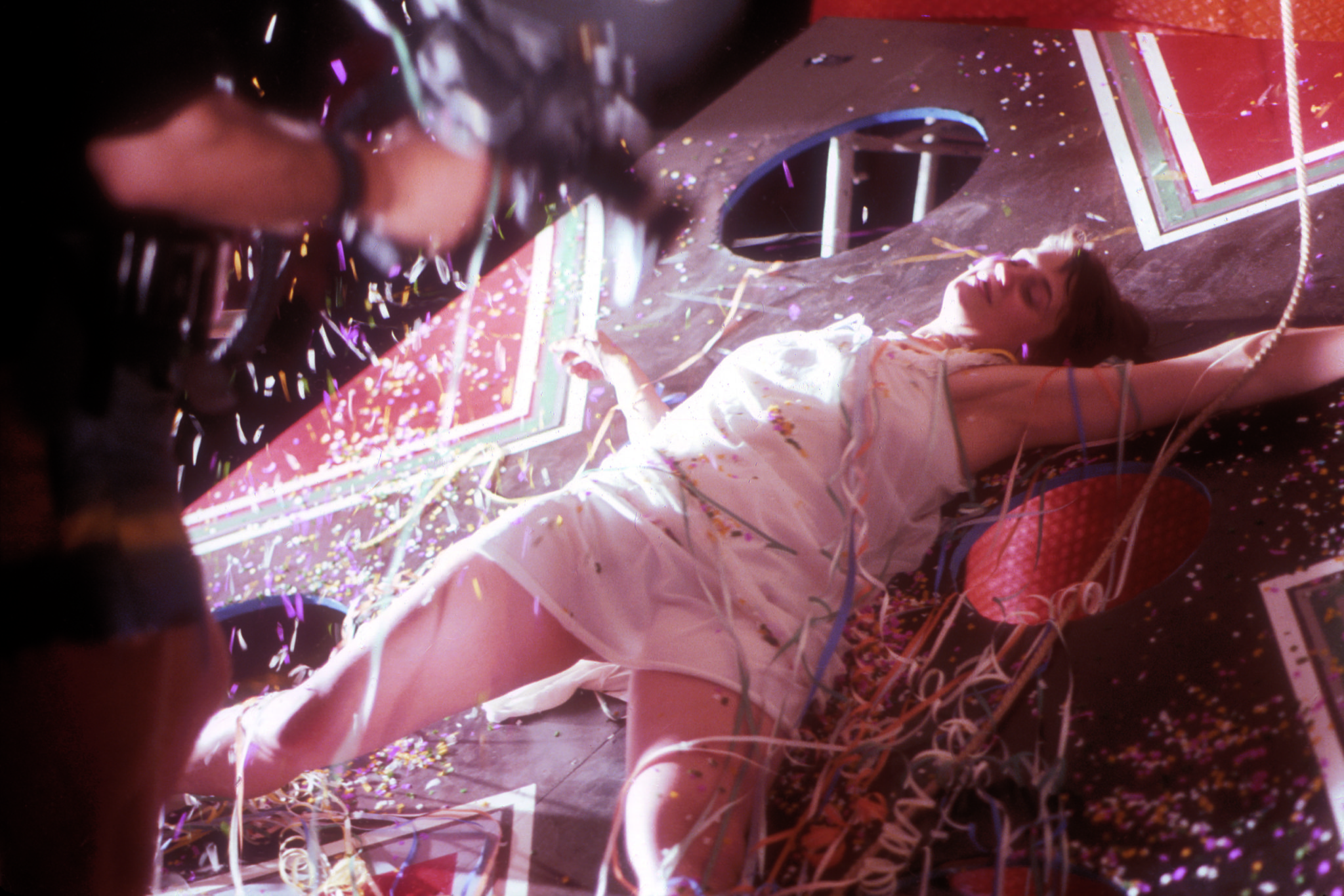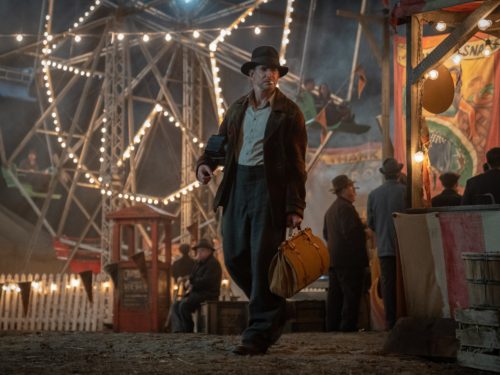Made as a reaction to contemporary horror trends, Session 9 is a haunted house story without ghosts, set in a run-down asylum
The first transorbital lobotomy was performed in 1937. A thin tube was forced through the bone at the back of the patient’s eye socket and ethyl alcohol was injected into their frontal lobe to dull a suspected overactive cortex. The foremost practitioner of lobotomies in the US, Walter Jackson Freeman II, dispensed with the tube and the formalin and advanced the procedure in 1946, opting instead to subdue patients with electroshock and jam an instrument like an icepick through the tear duct and behind the eye. Once the instrument pierced the brain, the pick’s point was used to sever nerve fibers between the prefrontal cortex and thalamus. In the US, during the brief period in the ’40s and early-’50s when the procedure was in vogue, nearly 20,000 lobotomies were administered. The survival rate was not favorable, and that’s not accounting for the thousands who experienced complications and lasting damage.
The era of lobotomizations, and the larger brutality it represents, hangs over Brad Anderson’s Session 9 (2001), a horror film set in a grim real-world location: the decaying, long-dormant Danvers State Hospital in Massachusetts. Formerly known as the State Lunatic Hospital, Danvers was a hotspot for medical procedures now understood to be twisted and backward. In this place, our dual capacity for compassion and savagery is braided together so tightly that mercy and cruelty, hubris and enlightenment, ingenuity and sadism are indistinguishable. The bad vibes of the hospital create a thick, alluring atmosphere that permeates the film and carries the narrative. Session 9 has one of the greatest, most evocative horror settings, with an authenticity and atmosphere that can’t be faked. The movie follows a five-man asbestos abatement team tasked with clearing out sections of the condemned Danvers complex. The skeleton crew is led by Gordon Fleming (Peter Mullen), who low-balled the bid to get the contract. The crew is working under a severe time constraint to get the job completed, pushing through long hours in hazardous conditions.

Over the course of the week-long assignment, the setting infects each person systematically. Jeff (Brendan Sexton III), Gordon’s nephew, the youngest and newest crew member, who apparently has intense nyctophobia (fear of the dark), is learning on the job and is increasingly wary of venturing down the hospital’s dark subterranean corridors, until it’s unavoidable. Hank (Josh Lucas) is drawn into his own Grimm subplot when he discovers coins and other treasures (and hair and teeth) hidden behind a wall in the basement, valuables collected from patients over the years and stashed near the morgue incinerator. Phil (David Caruso), the second in command, tries to keep the wheels on as the team falls behind schedule and Gordon’s behavior becomes increasingly erratic. Mike (co-writer Steven Gevedon) is lured into the archives of the building. He sequesters himself for long stretches and pores over files and tapes from patient therapy sessions found in boxes marked as evidence, particularly the unnerving case of Mary Hobbes.
But it’s Gordon whose descent is the steepest, his psyche sinking deeper into the aura of his surroundings as he succumbs to madness. He’s the black hole at the center and there are two converging inspirations that feed into his plight. The asylum’s looming, labyrinthine presence is the foundation for the whole film, haunting the composition of each frame and distilled in the disembodied character of Mary Hobbes, a fictionalized composite patient suffering from dissociative identity disorder. She’s sketched through voice over and collage, fleshed out by sound designer Lisle Houston Engle’s sonic manipulations and the voice work of Jurian Hughes. There’s a sense that this subplot has been pared down to its spectral essence, a severed connection to the main plotlines of the story that is never explained or resolved. We hear reel-to-reel recordings of sessions with her doctor where her alters surface, culminating in the reveal of “Simon,” the inciting personality who pushed Mary to murder. Gordon’s spiral parallels Mary’s revelations. His repressed crimes — against his family and the members of his crew — come to light in a rush. We’re told early on that patients were known to return to the site in the years after its closure, and Gordon’s breakdown deep in the asylum at the end of the film implies but never confirms an unspoken connection to Danvers.

Then there’s the true case of Richard Rosenthal, whose story made national headlines in the mid-’90s. He was an insurance employee at John Hancock who one day snapped and murdered his wife with a butcher knife in a fight over overcooked ziti. Thing is, after it happened, he kept going about his daily routine, taking his four-month-old daughter with him and punching in at work like nothing had happened. He’d return home each evening where his wife’s body remained, her heart and lungs cut out and arranged on a stake in the backyard. Gordon’s psychotic break mirrors Rosenthal’s and fractures the film in its final act. His murder of his wife, Wendy, and daughter, Emma, is reenacted at the close of the film, purely through the sound of the acts, one by one. It’s a chilling sequence and the decision to withhold the visuals, in favor of the array of polaroids Gordon arranges in the asylum, intensifies the experience in the mind. The Rosenthal case clearly resonated with Anderson; he’s been citing it and repeating the gory, inexplicable — sometimes embellished — details for years, from the time of the movie’s release to this day, as the retrospectives have kicked in. The crushing banality that sparked Rosenthal’s break from reality, the totality of his dissociation from his actions, and the extremity of the violence haunts the film, and Anderson himself.
Anderson is a tough director to pin down. He’s something of a journeyman and genre specialist who’s carved out a consistent career churning out studio procedurals like The Call (2013), Beirut (2018), and Fractured (2019), alongside independent projects like The Machinist (2004) and Transsiberean (2008). His forays into television account for the most impressive credits in his filmography, with work on The Wire, The Shield, Fringe, Boardwalk Empire, Person of Interest, and Treme. Session 9 was a surprising turn in his career when it arrived in 2001. Before that, he’d established himself by making the romantic comedies Next Stop Wonderland (1998) and Happy Accidents (2000). With Session 9 he wielded almost complete control over the production as writer, director, and editor. And the emphasis on style, texture, and experimentation over story makes Session 9 a striking outlier in his filmography. The most interesting analog in his career is the return to institutional intrigue with Stonehearst Asylum (2014), a far more polished and mainstream vision of systemic role-reversal.

Whereas Stonehearst Asylum, based on a short story by Edgar Allen Poe, is the epitome of a studio potboiler, Session 9 is a prototypical 21st century indie-horror. Shot run-and-gun using a digital rig, Session 9 has the distinction of being one of the first features captured on Sony’s 24P HD video camera. Like film, it shoots at 24 frames per second, as opposed to the 30 fps of conventional NTSC video, allowing Anderson and director of photography Uta Briesewitz (The Wire, John from Cincinnati, Walk Hard [2007]) to produce evocative deep-focus images using mostly natural light. Twenty years on, it looks appealingly dated while retaining its uncanny feel. The film is full of inimitable compositions with a stirring sense of place; the grain of the video resolution and the heavy Gothic atmosphere of Danvers are like oil and water. Session 9 is the one time Anderson has delved into this stylistic vein and he emerged from the asylum with a keystone cult artifact of 21st century horror, full of flourishes that could only exist in the early-aughts: lo-fi pixelation, spooky stock sound effects, and David Caruso’s immortal “fuck you.”
Anderson made Session 9 as a reaction to horror trends at the time, when the genre’s mainstream was steering into Scream sequels and the likes of I Know What You Did Last Summer (1997) — campy, poppy tongue-in-cheek teen thrillers billed as neo-slashers. In contrast, Session 9 is a haunted house story without ghosts, set in a run-down location coursing with portent; it’s possessed by the real history of the site and the pain inflicted there. The asbestos particles floating through the air, and the prospect of one bypassing the hazmat suits and flimsy N95 masks, is a persistent threat, infusing Session 9 with elements of body horror and environmental horror. “It incubates in your lungs,” Hank tells Jeff. “Tissue begins to grow around it, like a pearl…” The excruciating pustules on Gordon’s leg, from the boiling water his wife accidentally knocked over, are a constant physical reminder of his deterioration. Session 9 is also a psychological puzzle, a product of the turn-of-the-century moment where a final act reveal was all the rage. Session 9 gestures toward found footage with its hand-held camera work, grainy, desaturated palette, and authentic location shooting. Gonjiam: Haunted Asylum (2018) stands out as a progeny that draws out this connection. There’s also a fair amount of exploitation in Session 9’s pseudopsychology, with the unsavory conflation of mental illness and spiritual imbalance, demonic possession, and predatory violence. And, after all, Session 9 is not not a slasher. Characters are picked off until the final reveal, and it features a signature murder weapon: the pick-like lobotomy needle. Indie horror luminary Larry Fessenden even speeds in at the end for his customary slaying.
Kubrick’s adaptation of The Shining (1980) looms large over Session 9. The parallels are striking: the enormous estate with a checkered past, a protagonist who slowly loses his grip on reality, domestic violence at the film’s core, the motif of the labyrinth, plus an ending that hinges on mysterious photographs of the main character that evoke a cosmic, unsolvable connection to the location and its history. Session 9 even begins with a protracted guided tour of the building and grounds, courtesy of character actor Paul Guilfoyle, acclimating Gordon, Phil, and the viewer to a profoundly unstable and malevolent environment with dark secrets. All these comparisons are intentional, as Anderson has cited The Shining as a direct influence. The croaking voice over that periodically infiltrates the film and Gordon’s psyche, presumably from Mary’s “Simon” alter ego, or Gordon’s own evil inner voice, repeats “Doc” as a mocking refrain, warping Dick Hallorann’s (Scatman Crothers) nickname for Danny Torrance (Danny Lloyd). And, of course, Gordon’s wife’s name is Wendy.
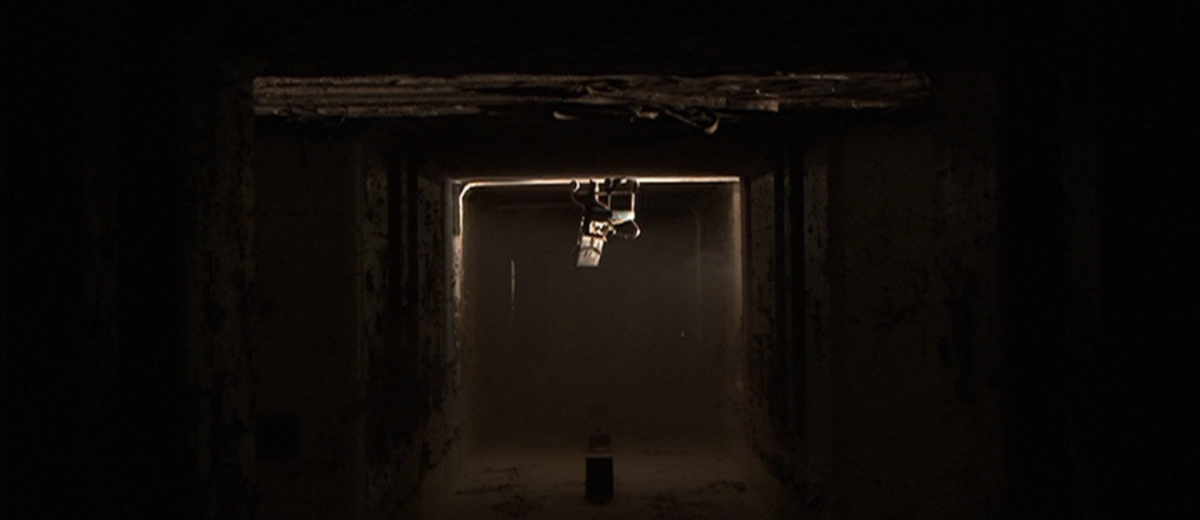
But Session 9’s iconic monochrome master shot, of the single wheelchair in the middle of a squalid antechamber, unlocks a deeper parallel. The image is positively Tarkovsky-esque in its ugly, decrepit beauty, recalling in particular the monumental Soviet director’s masterpiece Stalker (1979). Bleak, despairing, waterlogged, and unspeakably rich, this image of a corridor deep in the heart of Danvers is analogous to the fabled room in Stalker, the center of that film’s extraterrestrial maze, where the seekers’ purest desires and fears are exposed. All roads lead to this inevitable endpoint; it holds all the answers at the same time it compounds the mystery.
The alien atmosphere of the condemned hospital and the surrounding grounds is similar to that found in the Zone, the heavily guarded, ruinous area that’s been sealed off by the government in Stalker. The characters traverse this terrain cautiously, methodically, following certain rules and techniques to cut through this area where the natural laws of physics supposedly don’t apply. Both films make the physical world feel wrong; there’s an open-air claustrophobia to Session 9 as in Stalker, like some line has been breached from one dimension to the next. But the distinction between these overlapping worlds is imperceptible and indescribable. The irreducible dread of Danvers and the Zone ripples out, leaking into the natural world. Anderson sometimes lingers on the overgrowth and the life that surrounds the building, heightening the ambient buzzing and zooming in on the abject movements of insects. The very real hazards of the environment — Stalker was filmed largely near deserted, toxic hydroelectric power plants on the Jägala river near Tallinn, Estonia — seep into the experience of the film. Session 9 lingers on and marvels at spaces in the process of being reclaimed by nature but which retain a poisonous air. The decay captured in each frame is dense and hypnotic, with the overgrowth encroaching from all sides. It’s depicted as an inescapable void, a place with a disturbing magnetism, a closed, parasitic environment.

Session 9 is replete with subliminal sounds that coax out the story’s primal essence. The film is a feat of experimental sound design. Beyond the complex web of voice overs and cross-cutting, Anderson and Hughes sliced in animal noises and grinding industrial machinery alongside Rob Miller’s moody, sometimes playful score. Mike’s lengthy listening sessions in the asylum archives are purely about creating an atmosphere, casting a spell that suffuses everything with unease. Danvers is the epitome of a Gothic setting, with spires piercing the sky and the building complex forming the shape of a bat, built in the radiating Kirkbride design, but the level of deterioration amplifies the gloom and the drama. Peter Mullan would frequently tap into the negative vibes of the location, isolating himself in rooms between takes and imbibing “the bad shit that had gone down there.” Caruso admits he would wander beyond the safe zones. The place had a gravitational pull. The property even has a connection to John Hathorne, a notoriously unrepentant judge in the Salem witch trials.
The graffitied, crumbling sets were found that way and left relatively undressed for the production. Art therapy cutouts still littered the walls, fragments of thoughts and memories from tormented minds channeled into collage. The filmmakers reportedly found old patient tissue and blood samples on the premises. The unsettling, frequently treacherous location deepens the themes Anderson is exploring: institutional neglect, the collective trauma of state-sanctioned cruelty, the irreconcilable evils people are capable of, and the terrifying fragility of the human psyche. The characters in Session 9 casually stroll by rusted, obsolete machinery; vulgar defacings are juxtaposed against pacifying murals: a swan and a red sun reflected in a “hydrotherapy” tub, once-vibrant rainbow patterns, a basset hound on cracked porcelain tiles, and, according to Caruso, deformed-looking renditions of Mickey Mouse and Donald Duck in the juvenile wing. Session 9 has a dystopian air and it anticipates the rise of ruin porn. When Anderson and crew had run of the property, the horrors that happened there had not yet been washed away by time, trespassers, and heavy machinery. It’s now been razed and replaced by luxury apartments, but Session 9 preserves Danvers at the very end of its life, when it was still an open wound.
Stream Session 9 on Amazon Prime here
Purchase Session 9 on Blu-ray here
Stay up to date with all things Split Tooth Media and follow Oliver on Twitter
(Split Tooth may earn a commission from purchases made through affiliate links on our site.
Find the complete October Horror 2022 series here:
